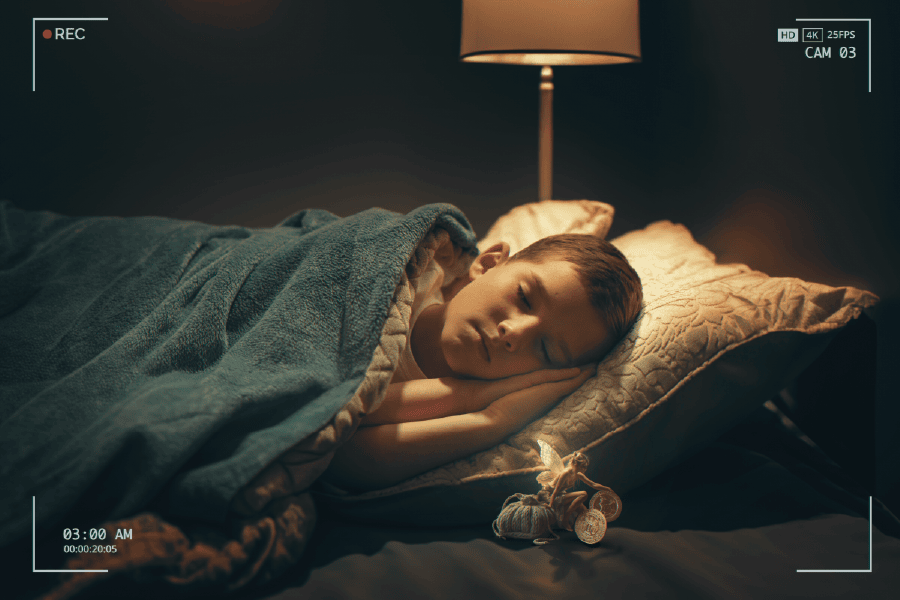Excessive nighttime illumination could heighten the likelihood of developing Alzheimer’s disease.

Understanding Nighttime Illumination Effects
As the sun descends and shadows blanket our environment, artificial illumination breaks through the gloom, creating a bright setting that many have grown dependent on. Nevertheless, recent research indicates these nighttime light sources may pose considerable risks to our health—particularly regarding cognitive abilities and disorders like Alzheimer’s disease. The subtle yet widespread effect of light after sunset can interfere with our circadian rhythms, which govern sleep cycles and hormonal equilibrium, triggering a series of physiological repercussions that could jeopardize brain health over time.
The consequences of excessive nighttime lighting extend beyond interrupted sleep; they are also closely tied to how we absorb information and form memories. Studies show that exposure to intense lights during the night may obstruct melatonin production, a hormone vital for restorative slumber. Insufficient sleep further exacerbates problems related to memory retention and cognitive deterioration—especially in elderly populations who are already at risk for neurodegenerative conditions. As researchers explore this intricate connection between environmental variables and neurological well-being, it becomes increasingly evident that reassessing our nighttime lighting.
The Connection Between Light and Sleep
The complex connection between light and sleep goes well beyond our basic perception of day and night. Natural illumination shapes our circadian rhythms, which serve as the body’s internal timekeeper for regulating sleep-wake cycles; when this rhythm is disrupted by excessive artificial lighting during the night, it can trigger a series of adverse health effects. This mismatch not only diminishes sleep quality but also impacts vital processes essential for cognitive well-being. When melatonin production is hindered due to an excess of light exposure after sunset, it can inhibit the brain’s ability to achieve deeper stages of sleep where important memory consolidation occurs.
Additionally, studies suggest that ongoing sleep disruptions caused by excessive nighttime light may play a role in neurodegenerative conditions such as Alzheimer’s. During deep sleep periods, the brain performs critical cleaning functions — eliminating toxins and solidifying memories — which are crucial for sustaining cognitive abilities. Thus, insufficient restorative rest can lead to the buildup of damaging proteins linked to Alzheimer’s disease.
How Sleep Disruption Affects Brain Health
Sleep disruption has extensive repercussions on brain health that go beyond simple tiredness. During sleep, especially in deep stages and REM cycles, the brain performs essential functions such as memory consolidation and detoxification. New studies suggest that insufficient or broken sleep can result in a buildup of amyloid plaques—a key indicator of Alzheimer’s disease—underscoring a direct connection between interrupted slumber and neurodegenerative disorders.
Moreover, irregular sleep schedules may hinder cognitive abilities by disrupting synaptic plasticity, which is vital for learning and memory. Neurons depend on coordinated activity during particular sleep phases to fortify connections crucial for retaining information; without this coordination, our cognitive sharpness declines. Additionally, chronic lack of sleep has been linked to heightened inflammatory markers in the brain, further increasing risk factors connected to Alzheimer’s onset.
Mitigating excessive nighttime lighting could be a straightforward yet significant move toward preserving our cognitive well-being. As we uncover more about how light pollution affects our circadian rhythms and thus our restorative sleep patterns.
Research Findings on Light Exposure and Alzheimer’s
Recent studies have revealed the significant influence of light exposure on brain health, especially concerning Alzheimer’s disease. Research indicates that excessive light at night disrupts circadian rhythms, which could worsen cognitive deterioration. The essential equilibrium of light and darkness is vital for managing physiological processes, such as melatonin production—a hormone that aids in sleep and plays a crucial role in neuroprotection. When this rhythm is disturbed by artificial nighttime lighting, it may heighten inflammation and oxidative stress within neural tissues, potentially speeding up neurodegenerative disorders.
Moreover, scientists are beginning to investigate the relationship between light exposure and the accumulation of amyloid-beta plaques—key indicators of Alzheimer’s disease. Early results suggest that constant exposure to light may create an environment favorable for the formation of these harmful protein aggregates in the brain. This concerning link highlights the importance of being mindful about our living spaces; simple changes like reducing bright lighting during evening hours could be essential for protecting our mental abilities as we grow older.
Mechanisms Linking Excessive Light to Neurodegeneration
Emerging studies indicate that prolonged exposure to artificial light during nighttime not only disturbs circadian rhythms but might also trigger a series of neurodegenerative processes. One suggested pathway highlights the effect of light on melatonin synthesis—an important hormone that is vital for regulating both sleep and neural stability. Insufficient melatonin levels, caused by ongoing nighttime lighting, can result in increased oxidative stress and inflammation within the brain, conditions recognized for accelerating neuronal harm and heightening the likelihood of disorders such as Alzheimer’s.
Additionally, research demonstrates that excessive light stimulation may disrupt synaptic plasticity—the brain’s capacity to strengthen or diminish connections based on activity. This impairment can hinder cognitive abilities like memory creation and recall, areas especially susceptible in Alzheimer’s disease. As we explore this issue further, it becomes clear that our modern habits—characterized by late-night screens and city illumination—may inadvertently foster an environment ripe for neurodegeneration. Safeguarding our brains involves more than just healthy eating and physical activity.
Practical Tips for Reducing Nighttime Illumination
To effectively decrease nighttime lighting, think about adopting layered illumination methods in your home. Begin by swapping out harsh overhead fixtures for warm, dimmable alternatives that let you customize the atmosphere to suit your preferences. Utilizing smart bulbs enables you to create schedules and effortlessly modify brightness levels, establishing a cozy environment without excessive glare that interferes with melatonin production. Furthermore, add gentle nightlights in hallways and bedrooms; they offer sufficient visibility for safety while being easy on the senses.
Another significant strategy is to welcome natural darkness when feasible. Consider investing in blackout curtains or light-reducing shades to protect your sleeping area from outside light sources such as street lamps or neighboring porch lights. Combine this with being mindful of device usage before bedtime—think about imposing a tech curfew to lower screen brightness at least an hour before sleep. This transition towards reduced exposure during these vital hours not only enhances sleep quality but can also yield long-term advantages for brain health, promoting cognitive resilience against Alzheimer’s disease.
The Role of Lifestyle in Cognitive Health
Lifestyle decisions significantly affect our cognitive well-being, often impacting our vulnerability to neurodegenerative disorders like Alzheimer’s. While the direct effect of excessive nighttime light is troubling on its own, it’s important to expand our view and examine how everyday routines can either strengthen or undermine brain function. Participating in regular exercise, following a balanced diet abundant in antioxidants, and nurturing strong social ties are crucial components that promote cognitive durability. For example, aerobic activity has been demonstrated to encourage the production of neurotrophic factors—proteins essential for neuron survival and growth—suggesting that staying physically active may mitigate some harmful effects tied to nighttime light exposure.
Additionally, engaging the mind through acquiring new skills or tackling challenging puzzles can build cognitive reserves; this safeguard may reduce the impact of possible damage from external factors such as disrupted circadian rhythms triggered by artificial lighting. The importance of sleep quality cannot be emphasized enough—the caliber of sleep is closely linked with brain health, involving both nighttime illumination and lifestyle habits like limiting screen time before bed.
Future Research Directions on This Topic
As we gaze into the future, inquiries into nighttime lighting and its potential connections to Alzheimer’s disease are set for thrilling progress. One intriguing path includes examining the biological processes at work; specifically, how prolonged exposure to artificial light disturbs circadian rhythms and influences melatonin levels. Researchers might explore whether different light wavelengths—such as blue light compared to warmer shades—could have varying effects on cognitive well-being, thereby creating possibilities for targeted strategies that reduce risks while enhancing health.
Another captivating avenue involves utilizing technology to assess environmental factors that affect sleep quality across different groups. Wearable gadgets could monitor levels of nighttime lighting along with vital signs, offering a deeper comprehension of how these aspects interplay over time. Furthermore, interdisciplinary research combining areas like psychology and urban design can provide valuable insights into crafting communities that encourage healthier lighting strategies, ultimately nurturing environments supportive of better neurological wellness. This junction not only opens doors for scientific inquiry but also for public health initiatives focused on protecting our shared cognitive futures.
Conclusion: Importance of Managing Nighttime Light
Managing nighttime illumination is not solely a matter of personal comfort; it plays a vital role in our overall health and cognitive wellness. Research increasingly indicates that excessive artificial lighting at night can interfere with our natural circadian rhythms, resulting in sleep disruptions and possible long-term neurological effects. By emphasizing a dark atmosphere at night—whether through intelligent lighting choices or straightforward methods like blackout shades—we can create an environment that promotes restorative sleep, which is crucial for brain function.
Additionally, the ramifications extend beyond individual well-being; communities can implement policies that tackle light pollution as part of public health campaigns. Incorporating thoughtful urban planning and raising awareness about nighttime lighting can nurture healthier surroundings while reducing risks linked to chronic exposure. As we navigate this era of constant brightness, understanding the intricate connection between light and cognitive decline enhances our awareness of how minor adjustments in our environment might protect against conditions such as Alzheimer’s disease. Ultimately, embracing darkness as an essential counterpart to contemporary living may be one of the most basic yet significant tactics for improving our long.
Recent Posts
-
Advice for achieving a healthier and more joyful lifestyle
September 16, 2024 -
Brazil: The premier location for thrilling adventures
September 14, 2024




